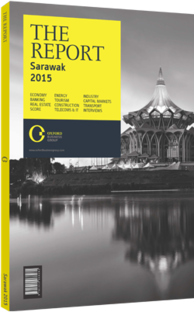OBG talks to Paul Koon, Group CEO, Press Metal

Interview: Paul Koon
How are industry players scaling up production to meet demand, and what competitive advantages does Sarawak hold for heavy industries?
PAUL KOON: The aluminium industry is quite unique in that you cannot simply increase capacity at will, but rather need a corresponding power supply in order to scale up. This power can only come from a few sources. Coal is one option, though it is not favoured due to its longterm insecurity and vulnerability to price fluctuations. The only other suitable power source is hydropower; however, there are only a few places in the world where hydropower plants can be located in areas that do not require long transmissions lines for consumer accessibility. Sarawak is one of these unique places, where the dams are not only in proximity to the market, but reliable rainfall can also sustain a stable power supply. Brazil, for example, experiences dry periods that result in electricity price jumps and power cost increases, causing smelters to partially or fully shut down. In Sarawak, shortage of rainfall is not an issue.
We believe the aluminium industry has growth potential, in addition to having a suitable power source to fuel industry demand. Moreover, the commitment from all relevant parties is there, with developments like the Sarawak Corridor of Renewable Energy ensuring that growing industry players tap available resources.
Which markets and industries are driving aluminium demand in the short-to-medium term?
KOON: It is a very exciting time for the aluminium industry, and growth is coming from many sectors – the largest of which are automotive and construction. Transmissions lines, packaging for pharmaceuticals and consumables, and electronics (due to heat dissipation needs) are also increasingly using aluminium.
Construction has been and will continue to be a major consumer of aluminium, as the metal is highly favoured by architects and there are no competitive replacements. High-rise buildings rely heavily on aluminium because it can be easily moulded and coloured, is virtually maintenance free and is light – all of which are features architects love. Going forward, modern buildings will undoubtedly use aluminium to a greater extent, providing a reliable source of industry growth.
The automotive industry is even more exciting, thanks in large part to upcoming regulations related to emissions control. There is a drive, particularly in the Western world, to make vehicles as light as possible in order to reduce carbon emissions. At the end of the day, these regulations will increasingly push automobile manufacturers to use full aluminium bodies.
In January 2014 Ford announced that one of its highest-selling vehicles, the Ford F150, was switching to a full aluminium body. This is a strong signal of trends to come, as full aluminium bodies were previously limited to higher-end and luxury vehicles. The metal’s entry to the mass market is a huge decision, as it involves switching the entire assembly line away from steel, which takes many years of development. This means that this new direction will not be easily reversed. Furthermore, worldwide vehicle use is rapidly increasing, especially in South-east Asia and the East Asia, making the automotive market even more lucrative.
What is being done to mitigate the risk of power interruptions at Sarawak’s smelting plants?
KOON: Mitigating these risks comes down to two issues, namely the strengthening of the power grid and the handling of unforeseen issues. While there is always the potential for instability during the ramp-up phase, in our case the necessary strength was in place to ensure reliability, with Bakun Dam’s turbines operational and Murum Dam further bolstering the grid.
The other critical aspect is how these issues are handled. Although heavy industry users like Press Metal can generally withstand a few hours of power interruption, it is important to react to and resolve these issues in a timely manner. Toward this end, it is likewise crucial, for the sake of both suppliers and investors alike, to strengthen communication between all parties involved.
You have reached the limit of premium articles you can view for free.
Choose from the options below to purchase print or digital editions of our Reports. You can also purchase a website subscription giving you unlimited access to all of our Reports online for 12 months.
If you have already purchased this Report or have a website subscription, please login to continue.

